An Introduction to Cacao Agroforestry
Posted: 01 Nov 2023
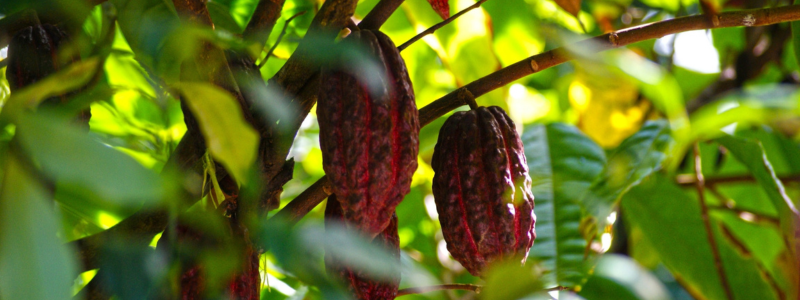
Cacao Agroforestry: What is it and why should you care?
Did you know cacao farming is one of the leading causes of deforestation? Due to the increasing demand for chocolate worldwide, current farming methods, and global warming, areas where cacao is grown have seen huge reductions in rainforest cover and grasslands, all to make room for more cacao trees.
Happily, many chocolate makers and plantation owners are fighting back against deforestation and championing a different, more sustainable way to farm cacao.
What is a Cacao Monoculture?
A monoculture is a place where only one thing grows; in this case, cacao trees. The land is cleared of all other trees, plants and vegetation to make room for rows and rows of Theobroma cacao (think of a vineyard or olive grove). It’s a popular method because of the higher yields it is known to produce, but it’s also unsustainable.
Monocultures require enormous amounts of resource, including land, water and fertiliser, and can quickly cause soil degradation. Which means monocultures only provide short-term benefits and lead to more deforestation to make room for yet more monocultures.
One of the most common practices among cacao monoculture farmers is the ‘slash and burn’ method. In order to clear the next parcel of land to move their cacao plantation, they cut down all vegetation and burn whatever’s left.
So, not only is the land clearing causing enormous damage to the environment by destroying habitats and reducing biodiversity, but the farming practices are eroding the soil. As a result, the farm is forced to keep moving in order to continue producing good yields, meaning more destruction and a more challenging job for the farmers.
For small plantation owners, it just isn’t a good long-term business plan.
But, fortunately, there is another way.
What is Cacao Agroforestry?
Agroforestry is a portmanteau of agriculture and forestry. It describes the system of integrating crops on the same land – similarly to a natural forest – with the aim of improving the soil’s nutrient cycling and reducing erosion. It also provides shade and increases the longevity and resilience of cacao trees by protecting them from pests and disease.
This diverse ecosystem leads to more consistent yields, and more income from multiple revenue streams, as farmers grow other crops such as mangoes and cashews alongside the cacao.
Agroforestry was common hundreds of years ago in parts of Central and South America, and has been making a comeback in cacao farming, thanks to Luker Chocolate in Colombia, as a way to mitigate the effects of climate change. Cacao trees are famously sensitive, and in monocultures they’re exposed to weather extremes, as well as soil erosion, pests, rodents, weeds and diseases like cacao swollen shoot virus (CSSV), so the added protection of a thriving, multi-layered ecosystem is hugely beneficial.
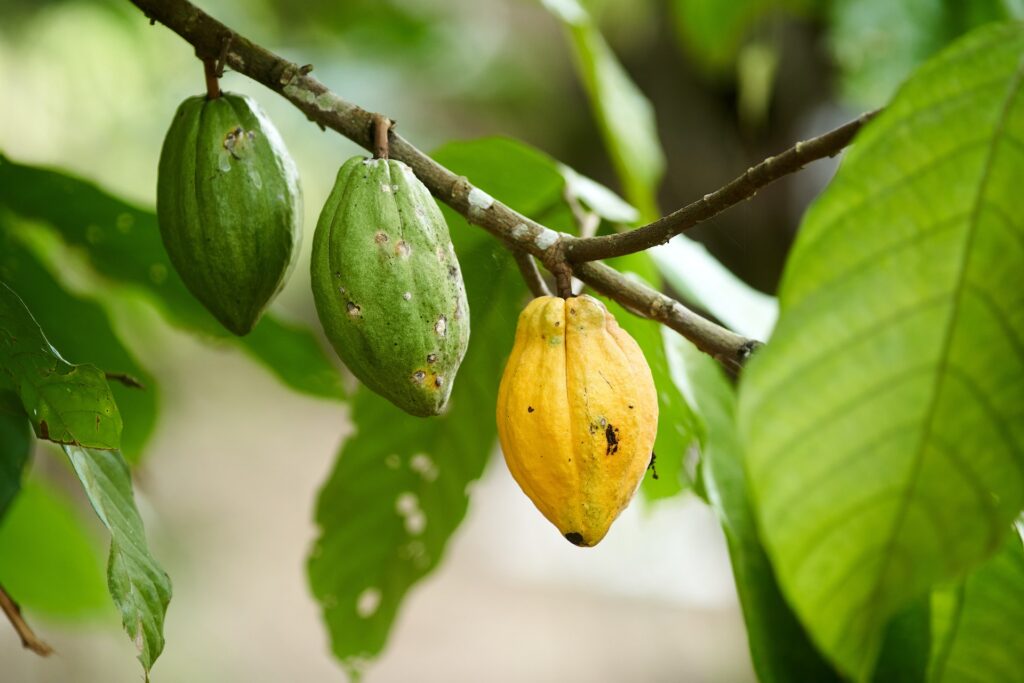
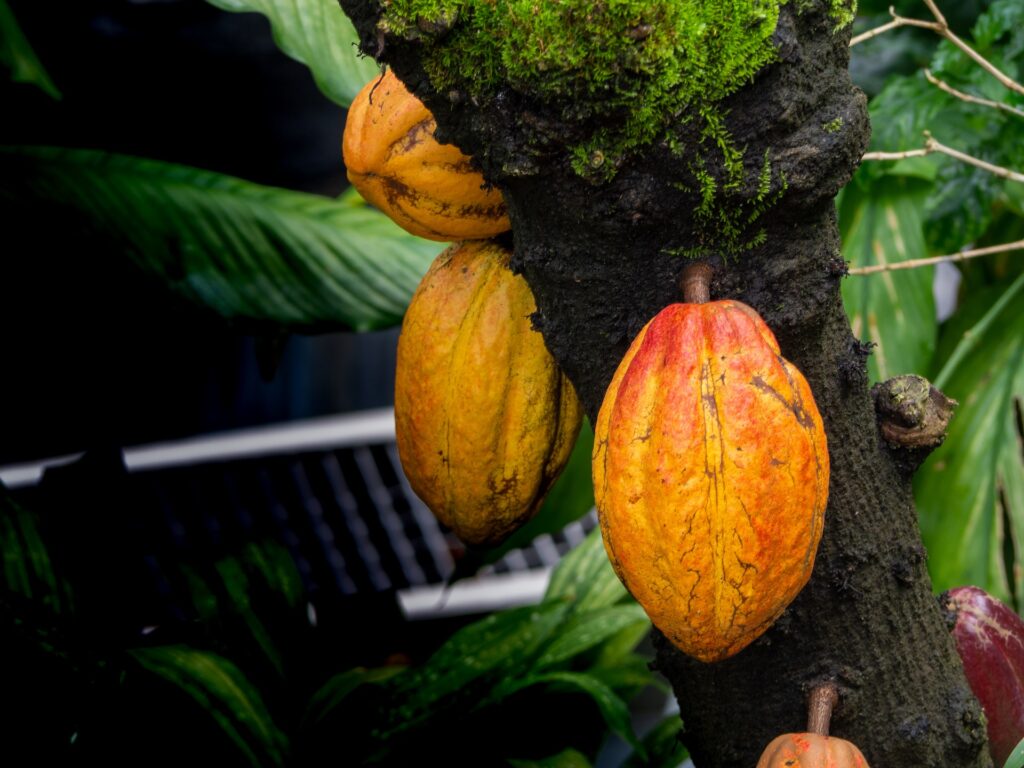
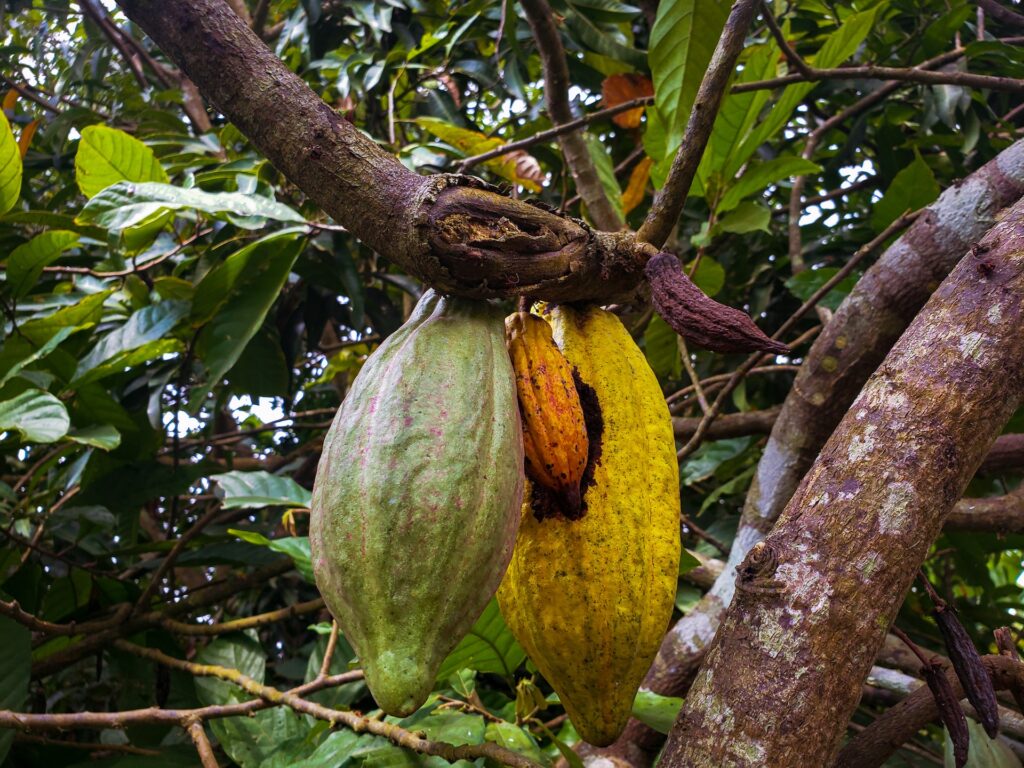
Cacao Forests and Sustainable Cocoa Farming
Many chocolate producers in Europe and the US now source their beans from farms and cooperatives that use agroforestry, prioritising long-term, sustainable practices over short-term profits. Consumers are increasingly interested in buying ethical, sustainable and environmentally friendly products, and are keen to know where their food, clothes and other materials come from. As a result, they’re driving change in the chocolate industry with their purchasing decisions.
The Cocoa Horizons Foundation, established by Barry Callebaut, has been promoting cacao forests, as well as land restoration and protection, as part of their program for many years. They believe that zero deforestation and low carbon farming are strongly linked with lifting farmers out of poverty, which is one of their key drivers.
Building a more profitable, long-term business model for cacao farmers helps the farmer, their family and the local community by boosting income and creating jobs. And it protects the landscape and livelihoods for future generations, helping these cocoa communities to thrive.
Several quality chocolate makers, including Valrhona and Luker, are now Certified B Corporations, an accolade awarded to companies who ensure their practices have a positive social and environmental impact, and prioritise transparency and accountability. So, you can be sure that by buying their chocolate, you’re helping to support the future of sustainable cocoa farming.
The Key Benefits of Agroforestry in the Chocolate Industry
The environmental benefits of cacao forests, and agroforestry in general, extend far beyond preventing deforestation. They promote water conservation, encourage biodiversity and reduce carbon emissions, compared to monocultures. They’re more resilient to natural disasters, thanks to higher levels of soil moisture and less erosion, and are therefore more resistant to the negative effects of climate change.
They also make sense from an economic point of view, as a reduced need for water, fertiliser and equipment means lower operating costs. The stability cacao forests offer also means a more reliable income and better security for the farmers, their children and their communities.
Growing trees for shade, such as bananas and plantains, as well as soil-enriching crops like beans and peas, also allows farmers to bring in additional profits throughout the year, whilst supporting the cacao trees and encouraging a better yield. Other crops that pair perfectly with cacao trees include coconut palms, cardamom, papaya, and even native tree species for timber.
All of which helps to diversify and stabilise the farmer’s income, reducing the impact of the fluctuating price of cocoa, and mitigating the need for damaging farming practices like the ‘slash and burn’ method.
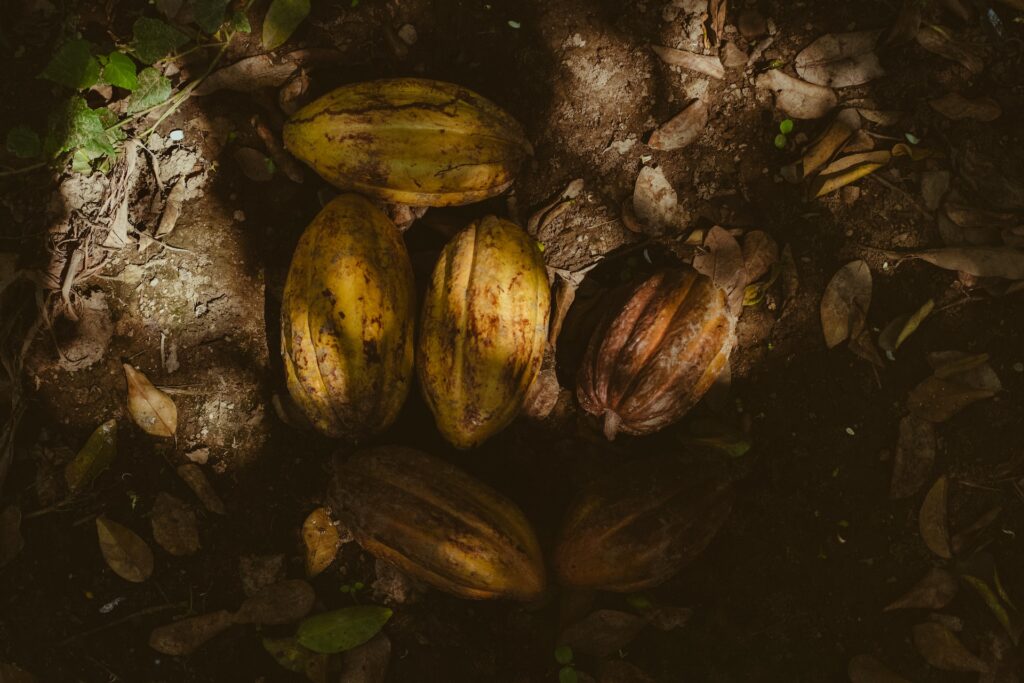

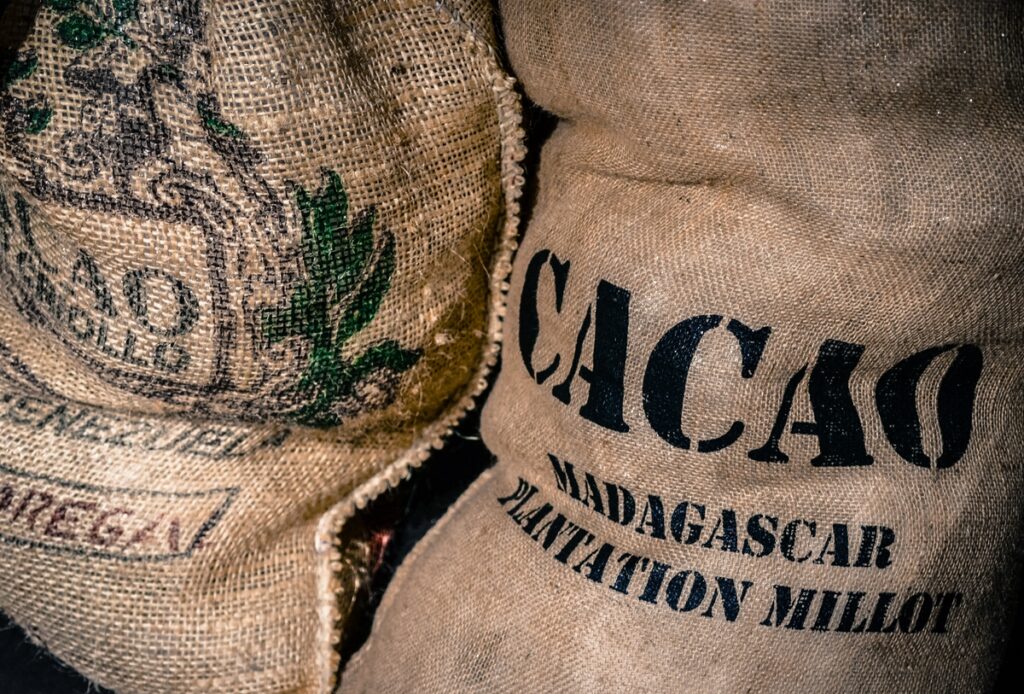
Why is Sustainability Important?
In 2018, an article claiming that chocolate could disappear by 2050 went viral. You can read about it here:
Here’s What You Need to Know About That Viral Story on Chocolate ‘Going Extinct’
In it, scientists estimated that if current cacao farming practices (like monocultures) continue, and climate change is not tackled, then the amount of suitable farmland will be greatly reduced.
Over half of the world’s cocoa beans are currently grown in West Africa, specifically Ghana and Cote d’Ivoire. Both countries are facing a temperature rise of several degrees by 2050, at the current rate.
Rising temperatures will push cacao plantations to higher, cooler land, and supply will dwindle. Eventually, the decision would have to be made whether to give up our beloved chocolate, or sacrifice the (currently preserved) natural habitats of endangered animals for cacao crops. It’s a dystopian prospect, and one we hope never to have to face.
Sustainability is key to protecting cacao supplies and being able to enjoy chocolate for centuries to come, and we can all make a difference by supporting cacao growers and chocolate producers who make sustainable practices a priority.
We’re proud to work with a number of chocolate brands who are pioneering this move towards ethical and sustainable chocolate, from bean to bar and beyond. You can browse our brand pages and choose the one that resonates most with you, and offers the right package of flavour, workability and values. A delicious combination!
.svg)